From how to fix democracy with math to what twins teach us about improving humanity, Wellesley professors are tackling timely topics in recent books. This sampling of titles is sparking conversation far beyond academia, in national media coverage and among readers interested in fresh perspectives on culture, identity, and systems shaping society.
We Refuse: A Forceful History of Black Resistance
Kellie Carter Jackson

After George Floyd’s murder in May 2020, Kellie Carter Jackson, Michael and Denise Kellen ’68 Associate Professor of Africana Studies, witnessed a wave of mass protests and symbolic gestures—Confederate statues toppled, Quaker Oats retiring the Aunt Jemima brand—yet saw little progress on lasting systemic change, such as addressing police reform or health care inequities.
“That to me signaled maybe protests and hashtags and marching are not effective, maybe those tools are becoming more obsolete,” she says. She wrote a piece for the Atlantic, “The Double Standard of the American Riot,” in response to critics calling nationwide protests un-American. Rebellion has always been used to defend liberty, she argued. Her op-ed caught publishers’ attention, who approached her to write a book.
Three years later in We Refuse: A Forceful History of Black Resistance, Carter Jackson pushes against the narrative of nonviolence as Black people in America’s sole response to white supremacy and violence. Nonviolence and violence are not the only responses. “When you look at systemic racism, if the options are burn it all down or march, that just doesn’t feel adequate enough,” Carter Jackson says. Instead, history shows Black people have used—and can continue to use—a broad range of tools.
“Trying to combat structural racism is like trying to swallow the ocean,” she says. “We need refusal more than anything now.” In the book she writes, “The path to liberation and full Black humanity is not easy. Comfortable solutions will not work.”
Carter Jackson tells the story of her great-great-great-grandmother, a former slave who refused a white doctor’s offer to help her injured granddaughter only in exchange for a lifetime of servitude. Her relative used natural remedies instead, and the girl survived—with a limp. Carter Jackson writes about five remedies Black people have used to respond to white supremacy: revolution, protection, force, fight, and joy.
Her deep historical account includes examples of resistance from the 1800s to the present day. She shares the story of formerly enslaved Solitude, in Guadeloupe, who while pregnant led an uprising against French troops following Napoleon’s orders to reinstate slavery. Solitude went to the gallows, her shirt soaked with breast milk.
She tells the tale of Carrie, a Black teenage girl who shot a police officer during mob attacks on Black communities in 1919 in Washington, D.C. She writes about the Texas grandmother who shielded her grandson from police after they drew firearms on him following a traffic violation. Carter Jackson weaves her own family stories throughout, including one about finding a gun and bullets in her deceased grandmother’s nightstand drawer—likely “a bulwark against a hostile, white supremacist world.”
Carter Jackson saves her final remedy, Black joy, for last because it’s “one of the most potent tools of revolutionary work toward liberation.” It’s roller skating, resting, vacationing. If it compels joy, she writes, it refutes the idea that Black people are subhuman.
In her postscript, “Drowning,” she cautions readers not to fall into the frenzy of extremism. Instead, wait for panicking people to tire. “We are living in a moment of chaos and constitutional crisis, and there is a lot of fanaticism and panic,” she says. “I want people to be very strategic about how they enter that fray.” She hopes that, collectively, revolution, protection, force, fight, and joy will bring change.
How to Be Multiple: The Philosophy of Twins
Helena de Bres
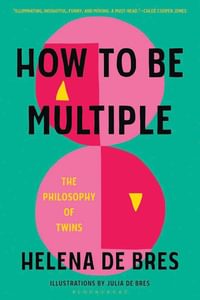
From Castor and Pollux in Greek mythology to The Shining twins to Cersei and Jaime Lannister in Game of Thrones, popular culture is rife with vivid, memorable portrayals of twins. They’re special, they’re shifty, they draw the “singleton gaze.”
“Twins are freaks, in the nonpejorative dictionary sense: We’re odd, unusual, anomalous,” says philosophy professor and “mirror image” twin Helena de Bres, who weaves together popular culture, philosophical insights, and her own experience of twinhood to explore why twins spark fascination and what their experience living “outside the norm” can teach humanity.
Her book research began during the pandemic, when de Bres felt adrift living in California. She wanted to connect with her twin, Julia, in New Zealand. To satisfy the urge, she delved into twin literature and philosophy texts and curated her own private twin film festival. A series of essays emerged from the research—the basis of her book.
“I didn’t realize how much of my life feels like it’s deeply connected to me being a twin until I sat down and really thought about it,” says de Bres, who opens her book by teasing apart the binary thinking that has long dominated how people approach twins.
De Bres poses philosophical questions about twins, such as “How many of you are there?” and “How free are you?” Julia, a sociolinguist and artist, illustrated the book and was de Bres’ sounding board. De Bres argues there’s a vast middle ground between treating twins as the same person and fixating on differences.
Her research made her question her own long-held beliefs about her identity in relation to her twin—for example, she isn’t as much of an introvert as she’d thought. She tackles existential questions head on: What makes conjoined twins separate people? What if they share a brain? But she connects complicated concepts to everyday life—it’s part of her goal to make philosophy less lofty and more accessible.
De Bres shares how she and Julia share a connective tissue disorder that has caused multiple bone fractures, and that each came out in their 30s. Society often portrays and treats twins, disabled people, and queer people as “other” and “relationship outlaws,” de Bres says. She hopes her book broadens people’s view of healthy, fulfilling relationships. “There are so many different and equally valuable ways that people live,” she says.
Twins are fascinating and frightening, de Bres adds, because their relationships challenge society’s prevailing belief that people should be self-sufficient individuals, rather than deeply dependent on others. “There’s this sense people have, including twins themselves, that twins have an unusual degree of connection, that you’re not looking at two fully separate beings,” she says. It’s a lesson for all people.
One way to ease society’s deep divisions, she suggests, is for more people to embrace twins’ “porous boundaries”—allowing ourselves to be deeply relational beings, more open to connection and interdependence. “We shouldn’t be afraid of that,” de Bres says. “We should celebrate it.”

What to Save and Why: Identity, Authenticity, and the Ethics of Conservation
Erich Hatala Matthes
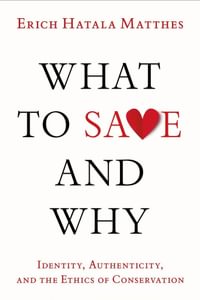
Should you hold onto Grandma’s cherished china or send it to Goodwill? Which patch of local land is worth preserving as a park? And what about a regional cuisine, beloved but known only to locals—shouldn’t we save that, too?
In a world of finite time and space, we can’t save everything. In his most recent book, Erich Hatala Matthes, associate professor of philosophy, explores the world of conservation: what we save and why, who is responsible for preservation, and who should be. Matthes argues that conservation shapes and preserves individual and collective identity, offering deep insight into the kind of people we want to be.
“We all care about saving things, and there are so many points of entry,” he says. “Maybe it’s your local sports team or an artifact.” In the book he writes, “All conservation questions are ultimately bound up with the prospect of saving ourselves, whether our perceived connections to the past or our aspirations about the kind of people we want to be.”
Matthes takes readers from world-class museums to his own kitchen, where he has hung a thick leather strap studded with brass cowbells, a relic from the Pennsylvania farm where his grandmother grew up. “My grandmother saved these things, and then my father did—so I save them, too,” he writes. “We save the bells and in doing so, in some small part, we can spy the branch of the family tree that our stem shoots off from.”
Matthes challenges readers to think about their own reasons for saving. For example, some people may have fond memories tied to the crumbling crocheted snowflake ornaments they hang on the tree every year. Others may enjoy the aesthetics of the object itself. “I’m not trying to tell people what to save,” Matthes says. “I’m trying to give them the tools to answer that for themselves.”
Understanding the forces that drive our impulses to save—or to discard—is essential in a world that’s marked by rapid and often unsettling change, he argues. “Our ability to manage the terms on which we experience change shapes our experience around saving things,” he says. With greater insight, we can better manage the loss we might feel when we can’t save things. “And we can try to find ways to confront change on our own terms, rather than having it foisted upon us,” he adds.
He encourages people to take an active role in preserving objects and institutions they hold dear, especially in the present moment. “In a context where indiscriminate efforts are taking place to eliminate things, the question of what’s important for us to save becomes even more pressing,” Matthes says.
Fitness Fiesta!: Selling Latinx Culture Through Zumba
Petra R. Rivera-Rideau
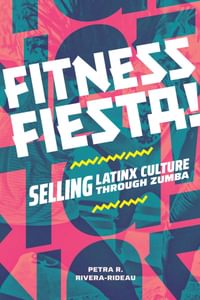
Petra R. Rivera-Rideau, associate professor of American studies, hates exercising. But in graduate school, Zumba got her out of bed for early-morning fitness classes. She loved the music—songs her Puerto Rican parents played for her—the body rolls and the booty pops. Zumba helped alleviate stress. But as time went by, it also made her uneasy.
Rivera-Rideau began to mull over how the brand with a devoted fan base of some 15 million participants in 180 countries perpetuates Latinx cultural stereotypes. Through Latin music and dance, the Zumba Fitness empire sells a version of Latinness that’s tropical, hypersexual, and party-loving, she says.
At a conference, she shared these mixed feelings with her mentor. Someone should write a book on the topic, Rivera-Rideau said, and tease apart Zumba’s seemingly contradictory messages. “Why don’t you write it?” said her mentor.
Ten years later, Rivera-Rideau traces how Zumba claims to lovingly celebrate Latinx culture and diversity while simultaneously reinforcing long-held ethnic stereotypes that fuel racist policies and systemic discrimination targeting Latinx communities in the U.S. It’s one of the first books to tackle the cultural dynamics of Zumba.
“Zumba is not taken seriously. It’s seen as frivolous. People do it and they like it, but they also make fun of it,” Rivera-Rideau says. But, she adds, it has important lessons to teach us about citizenship: “The ways in which we understand race and belonging and who counts as Americans happens in everyday spaces as much as it happens in our political discourse,” she says. “Zumba is reflective of bigger problems.”
Zumba is “not necessarily a space for confirming Latinx citizenship, despite being widely recognized for being uniquely ‘Latin,’” she writes. Her book offers valuable lessons about consumption, too. “You have to learn how to be a critical consumer,” Rivera-Rideau says. “In life, there’s really no unproblematic thing that exists.” She writes, “I am exceedingly critical of Zumba Fitness, I also love it.” She, and readers, wrestle with living with this uncomfortable reality.
Rivera-Rideau connects the Zumba-inspired sunny, exotic take on Latinidad and ongoing inequities to present day. “At the same time as we’re celebrating cultural contributions of Latinos, we’re doubling down on anti-immigration laws and are not necessarily interested in giving full civic rights,” she says.
Zumba reminds us there’s still much work to be done toward dismantling stereotypes. It’s a “space of possibility,” says Rivera-Rideau, and she will do her part to help. “I’ll lace up my sneakers, grab my water, and get to work,” she writes.
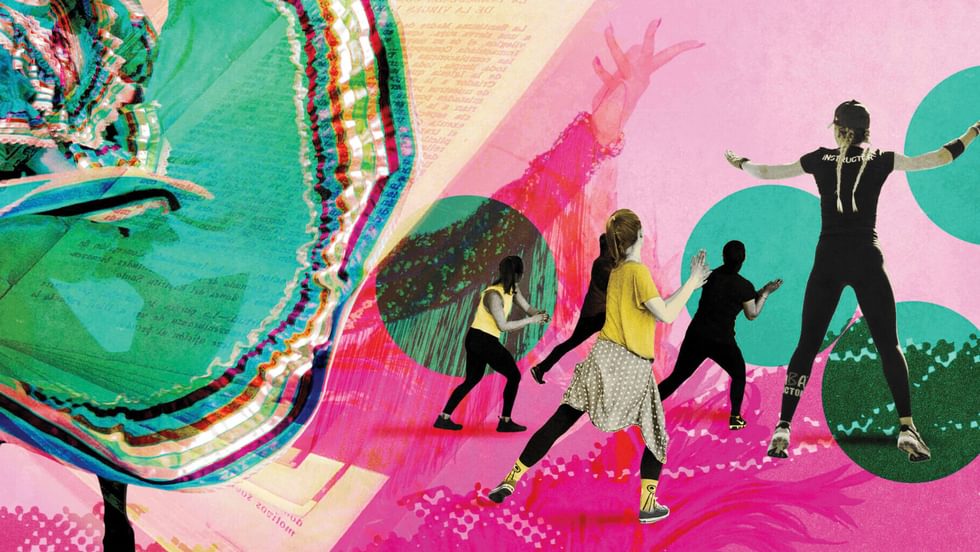
Making Democracy Count: How Mathematics Improves Voting, Electoral Maps, and Representation
Ismar Volić
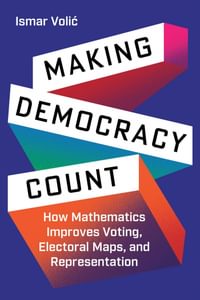
Professor of Mathematics Ismar Volić opens MATH 123: Mathematics and Politics the same way every year: He asks students to vote for their preferred pizza topping.
Between pepperoni and veggie, it’s nearly a tie. Then Volić introduces barbeque chicken. Pepperoni gets about 10 votes, veggie and chicken seven and eight, respectively. Pepperoni has the most votes, so it wins, the students agree. Then Volić pauses as students consider the numbers again, and look surprised. Of the 25 students, more than half didn’t want pepperoni. Should it really have won?
It’s a simple, everyday illustration of how ranked choice voting—ranking choices versus selecting only one candidate—better represents the will of the people. Tabulating election results nationwide through ranked choice is one of several recommendations Volić makes in his approachable look at the role of math in society, and what he calls the convenient, lazy numbers underpinning voting, electoral maps, and representation in the U.S.
Though many processes underlie U.S. politics, “math is what’s under the hood,” says Volić. “The next question is, are we using the best possible math to run our democracy? And we very quickly realize that no, we are not.” Volić is also director of the Institute for Mathematics and Democracy at Wellesley.
Polls show about 70% of Americans say democracy is broken—it’s not capturing peoples’ needs, desires, or political preferences. Volić argues that bad, entrenched math is largely to blame.
In an eye-opening moment, Volić explains why the U.S. House of Representatives has 435 seats. Since its founding, the House added seats to keep up with a growing population. But that stopped in the 1920s when some politicians feared losing power to immigrants, Volić explains. That decision led to a major imbalance: The framers of the Constitution intended a ratio of 30,000 people per representative. In 2030, that number could approach 826,000 to one.
“Whatever the method, increasing the size of the House is imperative,” writes Volić, and it is a straightforward way to alleviate many disparities in representation.
Volić also dissects the math behind electoral maps and processes that drive gerrymandering. Change in these political processes is difficult, he says, since people are reluctant to overhaul long-held practices, while politicians hesitate to tinker with systems that got them elected.
Still, progress is possible. K–12 schools can teach about the intersection of math and politics. Citizens can advocate for better voting methods in their cities and towns. “Change is not going to come from the top,” he says. “We have to start locally and build movement outward.” Volićs’ students, and his own high-school son, campaigned for local governments to switch to ranked choice voting.
Bringing math into the political equation gives us a more objective way to tackle shortcomings, Volić says: "Math gives us common ground, and it has to be part of the civil discourse.”
Deborah Lynn Blumberg ’00 is a freelance writer specializing in business, finance, and health, and the president of the Washington, D.C., chapter of the American Society of Journalists and Authors.


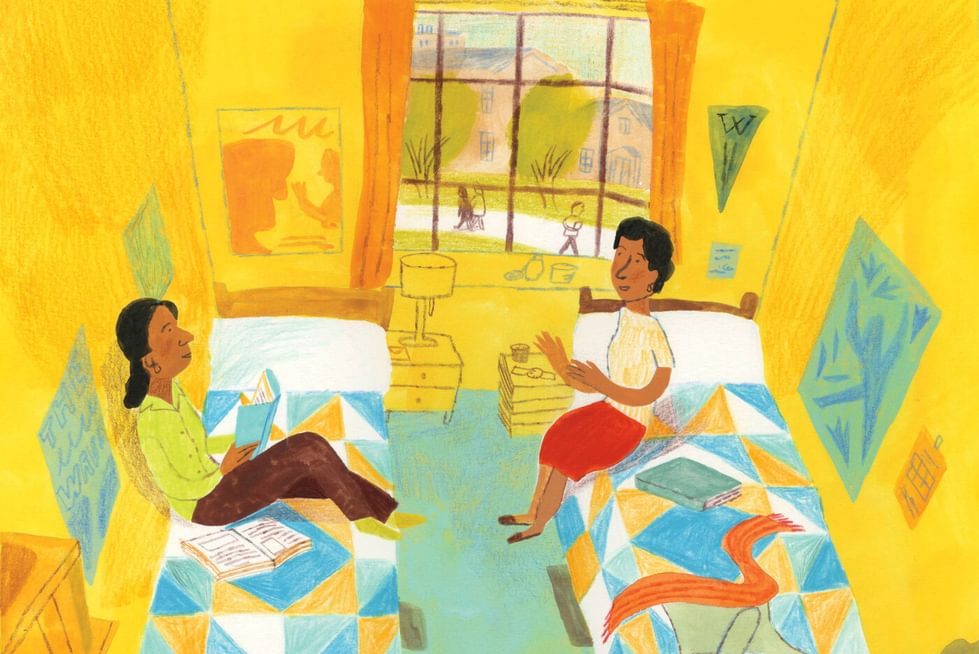
Post a Comment
We ask that those who engage in Wellesley magazine's online community act with honesty, integrity, and respect. (Remember the honor code, alums?) We reserve the right to remove comments by impersonators or comments that are not civil and relevant to the subject at hand. By posting here, you are permitting Wellesley magazine to edit and republish your comment in all media. Please remember that all posts are public.